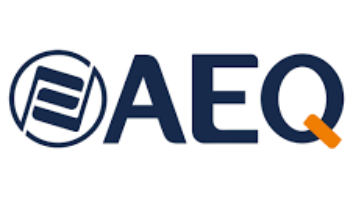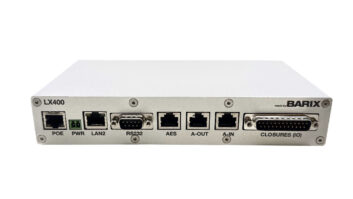
John Lackness, Tieline VP Sales, Americas. ‘Always ask if your new codec is IPv4/IPv6-compatible.’
Radio World asked several codec suppliers about trends in their area of expertise and we got back some great information. Here we talk with John Lackness, Tieline vice president of sales for the Americas. This is one in a series.
How have codecs changed in recent years?
Lackness: Advertising and therefore revenues are down — so there is a drive to be more profitable and look for ways to improve the bottom line. Satellite and synchronous links over transports such as ISDN and the like are costly to run, and more and more broadcasters are looking at ways to send audio reliably and more affordably over the public Internet using IP.
IP is the primary network transport evaluated in many situations, with many codecs now IP-only. This has primarily been driven by cost imperatives and the flexibility IP provides. The ability to globally manage IP codecs via Web-browser control mechanisms over the Internet has extended the reach of engineers to enable global management of networks from a single point.
In what direction is codec design heading?
Lackness: From a remotes perspective, there is a bigger focus on delivering more live and local content cost effectively. Smartphones have revolutionized newsgathering in particular, to the point where every reporter in a network can now afford to use an IP codec application to transmit high-fidelity remote audio to the studio live, or as a recorded report. Entire networks continue to arm every reporter with a pocket-sized audio codec application to improve the overall quality of the audio content broadcast.
From an audio distribution and STL perspective, the latest designs consolidate much more powerful capabilities over IP in compact hardware designs. They include multichannel, multiple unicast and multicast capabilities, as well as interoperability over multiple transports, including redundant Ethernet streaming ports in many cases.
Are engineers still leery of relying on the Internet for mission-critical audio transport?
Lackness: Tieline has been designing and refining IP codecs since 2005 and views IP now as an established transport with a significant track record of reliability. We have acquired significant knowledge over the past nine years by refining remote IP codecs and have added multiple layers of redundancy through SmartStream IP software to ensure engineers are confident about transporting perfect audio over imperfect networks like the Internet.
What’s the “state of the art” in bitrates and algorithms these days?
Lackness: There is a vast array of algorithms out there and it really depends on the application and available bandwidth.
For high-quality low-delay audio distribution and STLs, the most widely used would be the AAC range and aptX Enhanced. Also of note is the recent endorsement of Opus by the IEEE, and this is generating a lot of interest given its characteristics. The EBU has listed it as an optional algorithm as part of its Audio Contribution over IP standard for interoperability among codec manufacturers — so watch this space for more news on Opus in the next few months.
What role is HD Voice playing and what other important developments on the network provider side do we need to know about?
Lackness: This is an interesting one and everything has its place, but it is important to understand HD Voice has limitations.
First, it not supported over 2G and requires the 3G network. Second, a number of broadcasters find it is restrictive because only a select number of cellphone operators support it; both ends must be on the same network and this has proven to be a frustrating point for many Europeans where roaming agreements are in place; i.e. if Operator A supports it but operator B doesn’t, you only get a standard voice call (Italy is a great example of this).
With the advent of 4G-LTE and its fairly rapid rollout, the contention issues on 3G IP networks are less evident and the network architecture is improved to ensure better utilization of available spectrum.
What is the next big challenge facing codec designers?
Lackness: Interoperability over WANs.
What else should a smart buyer know?
Lackness: Always ask if your new codec is IPv4/IPv6-compatible. The IPv6 static IP address system has been chosen as the successor to the original IPv4 version and will transition over time to become the new Internet of the future. IPv6 hardware supports virtually unlimited numbers of public IP addresses, so broadcasters will be able to avoid complicated network address translation and firewall routing that is often associated with IPv4 networks.
What is your newest or most notable codec product?
Lackness: The 1RU Merlin rack-mount IP codec is designed to transmit bidirectional high-fidelity IP audio and full-duplex communications between the studio and a range of Tieline remote codecs or smartphones using Tieline’s Report-IT application.
Merlin is capable of two independent mono connections with different Tieline IP codecs or smartphones using Report-IT, to save money on hardware at the studio. The codec includes Tieline’s renowned SmartStream IP streaming management software for ultra-reliable remotes over IP. It also has dual power supplies and is future-proofed via IPv4/IPv6 compatibility. Merlin is ideal for studio and remote truck installations.












